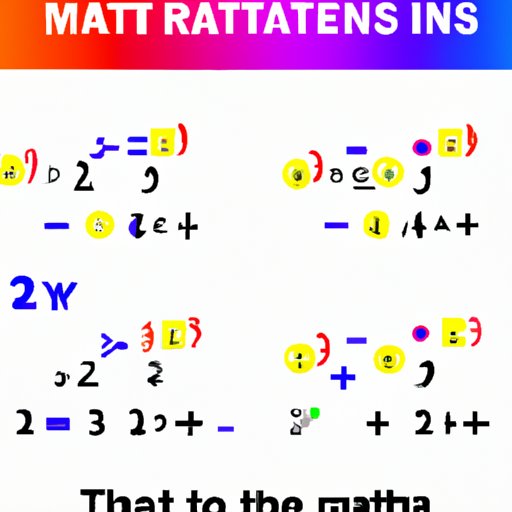
Introduction
Ratios are essential mathematical tools that compare two quantities. They are used in multiple fields, including finance, cooking, manufacturing, and many others, making it vital to understand how they work and how to perform them. This article is a comprehensive guide designed for beginners, explaining the steps of doing ratios, including interactive tools, real-life examples, and an FAQ section with clear and concise answers. Whether you’re a student, a professional, or just looking to understand ratios better, this article is for you.
Step-by-Step Guide
To perform ratios, follow these simple steps:
Step 1: Understand the Basics
Before diving into ratios, you need to understand some basic terminologies such as parts, fractions, decimals, and percentages.
– Parts: It refers to the quantity that makes up a whole. For example, one apple is one part of the five apples we have, which makes the whole.
– Fractions: A fraction is a part of a whole, expressed in numerical form. It can be written as a numerator (top number) and a denominator (bottom number).
– Decimals: A decimal is a way of writing fractions, using a dot to separate whole numbers from their decimal parts.
– Percentages: Percentages are expressions of ratios as number values that are equivalent to 100. Ratios can be expressed as percentages by multiplying by 100.
Step 2: Identify the Quantities to be Compared
Identify the two quantities that need comparison. For example, the number of boys versus girls in a class, the cost of product A versus product B or the weight of apples vs. oranges.
Step 3: Express the Quantities in Similar Units
To compare two quantities, they must be expressed in similar units. If not, convert one of the quantities to the same form as the other. For example, if you want to compare kg to pounds, you must convert one unit of measurement to the other.
Step 4: Determine the Ratio
To determine the ratio, divide one quantity by the other. For instance, if you want to find out the ratio of boys to girls in a class, divide the total number of boys by the total number of girls.
Step 5: Express the Ratio in Simplest Form
Reduce the ratio to its simplest form by dividing both terms by their greatest common denominator. For example, simplify the ratio 12:18 to 2:3 by dividing both the numerator and the denominator by six.
Step 6: Convert the Ratio to Percentages or Decimals
Convert the ratio into percentages or decimals as needed. For instance, if you need to express the ratio 2:3 as a percentage, you can find out how many parts it has by adding them both up, which gives five. Dividing two by five gives a quotient of 0.4, which can be converted to a percentage by multiplying by 100, which makes it 40%.
Summary
The steps above provide a simplified breakdown of doing ratios. Keep practicing to become an expert.
Real-World Application
Ratios find applications in everyday life. Below we discuss the application of ratios in different fields.
Cooking
Ratios are used in cooking to measure ingredients and to create recipes. For example, a pie recipe requires a ratio of two parts flour to one part butter.
Manufacturing
Manufacturing companies use ratios to calculate production cost and to manage inventory.
Finance
Ratios are used in finance to compare investments’ performances, evaluate profitability, and study balance sheets.
Interactive Tutorial
An interactive tutorial can make learning ratios effective and more enjoyable. It helps learners experience ratios in a practical, visual, hands-on way.
Visit the Khan Academy or MathGoodies websites to access an interactive ratio tutorial.
FAQ Format
Q: What is a ratio?
A: A ratio is a mathematical tool used to compare two quantifiable values.
Q: How do you determine the ratio of two quantities?
A: To determine the ratio of two quantities, divide one by the other.
Q: How do you write a ratio in its simplest form?
A: To write a ratio in its simplest form, divide both the numerator and denominator of the ratio by their highest common factor.
Video Tutorial
A video tutorial is an engaging technique to demonstrate step-by-step procedures and make learners comfortable and confident in performing ratios. Khan Academy has an interactive video guide for performing ratios.
Conclusion
Performing ratios is an essential skill that finds application in various fields from cooking, manufacturing, to finance. By following this guide, including interactive tutorials, examples, and a video guide, you are on the path to mastering ratios. Keep practicing and look for ways to apply these ratios to real-life situations.




